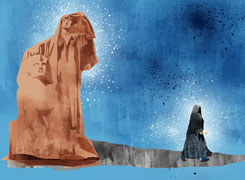Ramalingam Kalirajan |10902 Answers |Ask -Follow
Mutual Funds, Financial Planning Expert - Answered on Jul 10, 2024
He has an MBA in finance from the University of Madras and is a certified financial planner.
He is the director and chief financial planner at Holistic Investment, a Chennai-based firm that offers financial planning and wealth management advice.... more

Hi Sir, My age is 33. My salary is 70k. I have 4Lakh in mutual fund ( current SIP 12500) and 4L in EPF and 20L stocks with zero debts. My monthly expenses is 35k. I want fixed income 50k at age of 50. How can I get 50k or any suggestions for better investment plan.
Current Financial Overview
Income and Expenses
You earn Rs. 70,000 per month and your monthly expenses are Rs. 35,000. This leaves you with Rs. 35,000 for savings and investments.
Existing Investments
Mutual Funds: Rs. 4 lakhs with a current SIP of Rs. 12,500.
EPF: Rs. 4 lakhs.
Stocks: Rs. 20 lakhs.
Zero Debts: This gives you financial flexibility.
Setting Clear Goals
Goal: Fixed Income of Rs. 50,000 at Age 50
You want to achieve a fixed monthly income of Rs. 50,000 by the time you turn 50. This requires a combination of steady growth and income-generating investments.
Diversifying Your Portfolio
Mutual Funds
You are already investing in mutual funds, which is excellent. Let's look at how we can enhance this:
Types of Mutual Funds
Equity Mutual Funds: These funds invest in stocks and have the potential for high returns. They are suitable for long-term growth.
Debt Mutual Funds: These funds invest in fixed-income securities. They are less volatile and provide stable returns. Good for balancing risk.
Hybrid Funds: These funds invest in a mix of equity and debt. They offer a balance of growth and stability.
Advantages of Actively Managed Funds
Actively managed funds have professional managers who aim to outperform the market. They can provide better returns compared to index funds.
Direct vs. Regular Funds
Direct Funds: These have lower expense ratios but require more effort and knowledge to manage.
Regular Funds: These come with professional guidance and support. Investing through an MFD with CFP credentials can provide valuable insights.
Debt Instruments
Debt Mutual Funds
Consider adding more debt mutual funds to your portfolio. They provide stability and are less affected by market volatility.
Fixed Deposits (FD)
Fixed deposits offer guaranteed returns. They are safe but may offer lower returns compared to other investment options.
Government Bonds
Invest in government bonds for secure and steady returns. They are low-risk and provide regular interest income.
Equity Investments
Diversified Stock Portfolio
You already have Rs. 20 lakhs in stocks. Ensure this portfolio is diversified across different sectors to minimize risk.
Regular Monitoring
Regularly review your stock investments. This helps in making necessary adjustments based on market conditions.
Creating a Financial Plan
Asset Allocation
Diversify your investments across different asset classes. This reduces risk and ensures steady growth.
Setting Milestones
Break down your long-term goal into smaller milestones. This helps in tracking progress and making adjustments as needed.
Regular Reviews
Review your financial plan regularly. This ensures your investments are aligned with your goals and market conditions.
Importance of Compounding
Long-Term Growth
Compounding allows your investments to grow exponentially over time. The earlier you start, the more significant the growth.
Reinvesting Returns
Reinvest your returns to maximize growth. This helps in achieving your financial goals faster.
Consulting a Certified Financial Planner (CFP)
Personalized Advice
A CFP can provide tailored advice based on your financial situation and goals. They help optimize your portfolio and create a comprehensive financial plan.
Professional Management
CFPs offer professional management of your investments. They ensure your portfolio is aligned with your goals and risk tolerance.
Building Trust
Check the CFP’s credentials, reviews, and have an initial complimentary call. Speak to existing clients to gauge their trustworthiness.
Generating Fixed Income
Systematic Withdrawal Plan (SWP)
An SWP allows you to withdraw a fixed amount from your mutual fund investments regularly. This provides a steady income stream.
Dividend-Paying Stocks
Invest in stocks that pay regular dividends. This provides a steady income in addition to potential capital appreciation.
Monthly Income Plans (MIPs)
MIPs are mutual funds that invest in a mix of equity and debt to provide regular income. They are suitable for generating fixed income.
Risk Management
Insurance
Ensure you have adequate insurance coverage for health, life, and property. This protects your financial plan from unforeseen events.
Emergency Fund
Maintain an emergency fund to cover unexpected expenses. This ensures your long-term investments remain untouched during emergencies.
Diversification
Diversifying your investments reduces risk. Spread your investments across different asset classes to protect against market volatility.
Your proactive approach towards securing your financial future is commendable. Your current investments and zero-debt status are strong foundations. Keep up the great work!
Final Insights
Achieving a fixed income of Rs. 50,000 by age 50 is within reach with disciplined investing and proper planning. Continue diversifying your portfolio, leverage the power of compounding, and consider consulting a CFP for personalized advice. Stay informed, review your investments regularly, and make adjustments as needed to stay on track.
Best Regards,
K. Ramalingam, MBA, CFP
Chief Financial Planner
www.holisticinvestment.in
You may like to see similar questions and answers below
Ramalingam Kalirajan |10902 Answers |Ask -Follow
Mutual Funds, Financial Planning Expert - Answered on Jun 06, 2024
Ramalingam Kalirajan |10902 Answers |Ask -Follow
Mutual Funds, Financial Planning Expert - Answered on Aug 04, 2025
Ramalingam Kalirajan |10902 Answers |Ask -Follow
Mutual Funds, Financial Planning Expert - Answered on Sep 27, 2025
Reetika Sharma |432 Answers |Ask -Follow
Financial Planner, MF and Insurance Expert - Answered on Nov 08, 2025
Samraat Jadhav |2514 Answers |Ask -Follow
Stock Market Expert - Answered on Dec 18, 2025
Reetika Sharma |432 Answers |Ask -Follow
Financial Planner, MF and Insurance Expert - Answered on Dec 18, 2025
Reetika Sharma |432 Answers |Ask -Follow
Financial Planner, MF and Insurance Expert - Answered on Dec 18, 2025
Reetika Sharma |432 Answers |Ask -Follow
Financial Planner, MF and Insurance Expert - Answered on Dec 18, 2025
Samraat Jadhav |2514 Answers |Ask -Follow
Stock Market Expert - Answered on Dec 18, 2025

Kanchan Rai |648 Answers |Ask -Follow
Relationships Expert, Mind Coach - Answered on Dec 18, 2025
Kanchan Rai |648 Answers |Ask -Follow
Relationships Expert, Mind Coach - Answered on Dec 18, 2025
Anu Krishna |1754 Answers |Ask -Follow
Relationships Expert, Mind Coach - Answered on Dec 18, 2025
Anu Krishna |1754 Answers |Ask -Follow
Relationships Expert, Mind Coach - Answered on Dec 18, 2025
Anu Krishna |1754 Answers |Ask -Follow
Relationships Expert, Mind Coach - Answered on Dec 18, 2025























